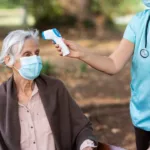
Simon Meza
Home
.
Simon Meza
Categories
Recent Posts
tags
Chronic conditions cost reduction fee for service Healthcare Payers Percentage Population private Remote patient monitoring Security Seniors Teleheath value based care
Social Links
-

Long-Term Habits and Conscious Health, Goals for RPM
In today’s fast-paced world, promoting active and conscious habits is more crucial than ever. This approach enhances physical well-being and nurtures mental resilience. At its core, it empowers individuals to take charge of their health proactively. Living actively involves regular…
-

Doctors Can Better Manage Panic Attacks with RPM &BHI
In today’s fast-paced world, panic attack awareness is more crucial than ever. Anxiety disorders, including panic attacks, are among the most common mental health issues affecting millions globally. Therefore, RPM aims to decrease prevalence and impact of panic attacks and…





